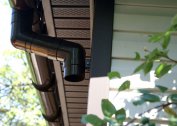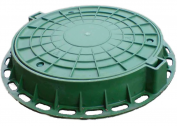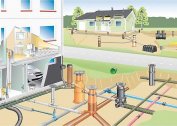Probably any adult has encountered the problem of a clogged pipe in stock at least once in his life. The result was not its patency, but the result - a complete inconvenience to the user. We open the tap, we use water, but it does not go away. It should be a muddy gray or black liquid in the bathtub or sink, but it is disgusting even to mention the unpleasant smell. There really will not want to open any mixer anymore until the problem is solved.
Causes and determination of the clogging of pipes
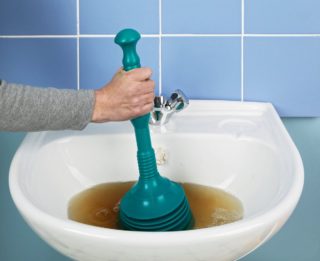 So far, not all houses are so modern and in a significant part of them are preserved in the use of cast iron pipes. Their main distinguishing feature is the inner, rather rough surface, capable of delaying and accumulating in itself small particles of future clogging.
So far, not all houses are so modern and in a significant part of them are preserved in the use of cast iron pipes. Their main distinguishing feature is the inner, rather rough surface, capable of delaying and accumulating in itself small particles of future clogging.
The modern plastic stock system, on the contrary, is smoother and slippery inside, which allows unwanted particles to slip inside the pipe faster and easier without creating a cork.
Most often, the pipes are clogged:
- fat clots;
- hair;
- dust and threads;
- sediment rust and calcium;
- large food debris (fish bones and skin, pieces of skin of vegetables or fruits, other food debris).
Less commonly, siphon or technological blockages may be such causes. They arise due to deterioration or improper installation of drain pipes.
To eliminate inconvenience, you first need to find out where the pipe clogged. Having dealt with this, it will be clear how to proceed further.
You can try to determine the approximate obstruction location as follows: open the tap and monitor the rate of water discharge:
- does not leave at all - the siphon is most likely clogged;
- it doesn’t take much, but does not move further - the pipe section from the siphon to the first turn is clogged;
- starts to leave well, but still not completely - an approximate blockage of more than 1.5 meters.
At first, to determine the obstruction in plastic drains, it is reasonable to use a flashlight. Just shine it on the visible surface of the pipe, inspect the siphon. We pay special attention to the corrugated part of the plastic pipe, it attracts blockage in the same way as the old cast-iron construction. Dimming will indicate a problem in this area.
There are several methods to resolve such troubles.
Mechanical troubleshooting methods
Plunger
It is a Latin word meaning “windy” or airy. This is the principle of action on a clogged pipe. However, it can be the simplest, fastest and most effective. A minus of the known device is its “range of effect”. It depends on the range or proximity of the clogged pipe. The farther or closer - the less or more effective this tool will be.
Cable
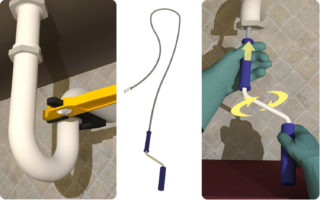 Externally, this device looks like a metal wire with a pen holder and a cleaning nozzle on the other hand. Most often used for “large” violations. They can be a rag, bag or other large object that has got into the sewer. The principle of operation here is rotational-translational. This item quite easily and quickly breaks through a blockage due to its length and flexibility.
Externally, this device looks like a metal wire with a pen holder and a cleaning nozzle on the other hand. Most often used for “large” violations. They can be a rag, bag or other large object that has got into the sewer. The principle of operation here is rotational-translational. This item quite easily and quickly breaks through a blockage due to its length and flexibility.
Siphon disassembly
Solves the problem if a blockage occurs here. The siphon is located under the bath or kitchen sink. In the first case, it becomes clogged with hair, pieces of crushed soap, in the second - with thick fat or food debris. It must be disassembled for cleaning. We put a bucket or basin on the floor under it so that water does not spill onto the floor. Disconnect the siphon sump from the sink or bath fixtures. Depending on the type, this can be done manually or using an adjustable wrench.We mechanically clean the disassembled knee with a brush or brush, various detergents can be used if necessary. When the work is done, we connect all the elements together and reconnect to the drain. We open the water and monitor its cross. You should pay attention to the joints, in which case lay rubber gaskets so that water does not leak from the pipes themselves to the floor.
Chemical methods
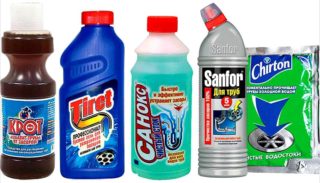 These are special tools that can be purchased at the store. They differ in composition and packaging. May be liquid or dry.
These are special tools that can be purchased at the store. They differ in composition and packaging. May be liquid or dry.
Sanoks “Net stock”
This “light” gel-like product is known for its soft effect on any type of pipe. While working with him, breathing in his smell is not advisable, because it is caustic and bright. It is recommended to use it for non-problematic blockages, as well as for their prevention.
Mole
This reagent was successfully used by our mothers and grandmothers. Low cost and ease of use are its positive aspects. The agent may be dry or liquid. According to the instructions, just send it to the sink and forget it for a certain time. The mole dissolves not only the main blockage, but also cleans deposits inside the pipe. In the old days it was used in thick cast-iron-metal pipes. Therefore, he copes with a blockage in plastic systems with a bang.
Chirton “Clean Gutters”
Of granular products is quite effective and popular. Its strength is in the concentration of cleaning agents. The composition is based on sodium nitrite and caustic soda. This tool copes with organic blockages in fifteen minutes. Its plus is disposable packaging. No need to pay for excess substance and store it in the house.
Folk remedies
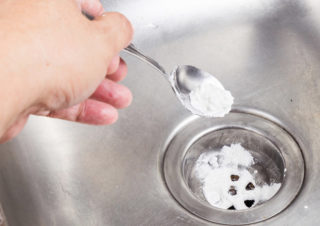 You can try to use them if at hand there is not one of the tools to fix the problem of the above.
You can try to use them if at hand there is not one of the tools to fix the problem of the above.
Soda and Vinegar
When these two substances are mixed, a powerful chemical reaction is created that creates high pressure on the blockage, and active foam is also produced. It is a good solvent and eliminator of plaque and fat.
First you need to remove stagnant water as much as possible and try to get rid of the blockage by mechanical means. Now take a half pack of soda and pour it into the drain hole. Pour vinegar there too - 100 ml. It can be slightly warmed up to 40-50 degrees, so that the reaction goes even more efficiently. Clog the drain hole with a rag and wait 1 hour. After this time, pour boiling water into the drain - about two liters. Check if the problem is fixed. If not, then this action can be repeated, slightly modifying it. Mix hot water with soda in a ratio of 1 to 3. Pour this mixture into the drain and wait 15-25 minutes. After that, pour in the vinegar in such quantity as they took soda.
Salt
Add 5 tablespoons of salt to one liter of hot water, mix until dissolved and pour into the drain hole. Saline solution well cleans pipes from fat, removes unpleasant odors. This method will also serve as an excellent prophylaxis in the case of not very clogged pipes.
Lemon acid
40 grams of powder should be mixed with three liters of boiling water and pour this liquid into the drain. If you have plastic pipes, then it is reasonable to use hot water for mixing.
Problem Prevention and Prevention
Disposer
 You can install a food waste chopper in the kitchen. It is put into action by a stream of water. The cutting knives of the device spin, processing food particles into a small substance, which is discharged into the general sewer. This professional works silently and does not require special care. Just don’t “feed” him with plastic bags, rags or threads, he doesn’t like that.
You can install a food waste chopper in the kitchen. It is put into action by a stream of water. The cutting knives of the device spin, processing food particles into a small substance, which is discharged into the general sewer. This professional works silently and does not require special care. Just don’t “feed” him with plastic bags, rags or threads, he doesn’t like that.
Rinsing with hot water
About once a week, turn on the most hot water, let it wash the pipes well from fat and silt accumulations.
Plum net
Effective method! Plastic or iron mesh is located in the bathtub or sink itself. Retains hair and particles of small food waste. It is cleaned manually as it gets dirty. It is enough to tap it on the inner edge of the bin and set it back.
Do not throw trash
Even if it seems like it will slip through. Well, you need to pour large leaf tea leaves, small purifications from vegetables and fruits. Of course, do not throw away large objects.
Change sewer pipes
If they are old, rusty and iron on new - plastic. 100% success awaits you here, although the method is not easy and costly.
Regularity and diligence in the preventive protection of pipe clogging will provide you with the convenience and comfort of using your piping system. Teach yourself and explain to your family how much is necessary and important.
We wish you clean pipes and their comfortable use.
